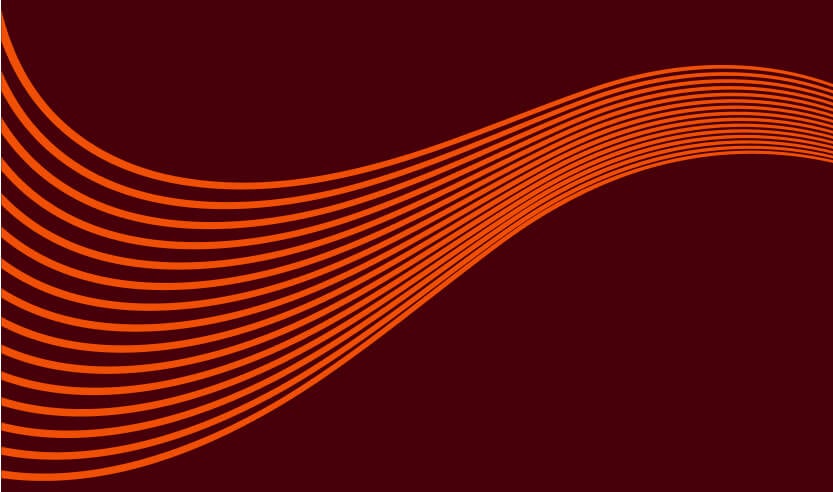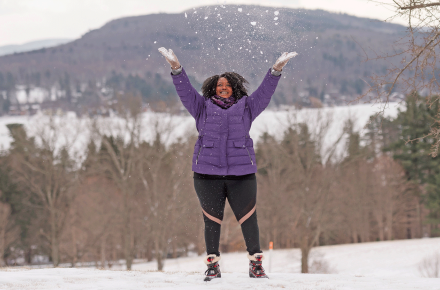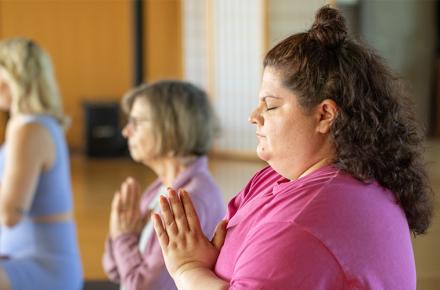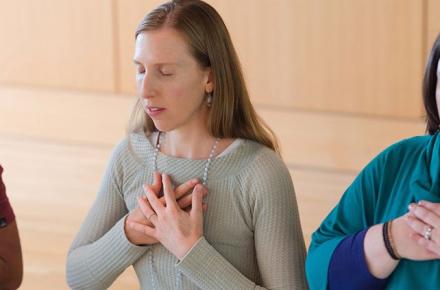Deconstructing Warrior I, Kripalu Style

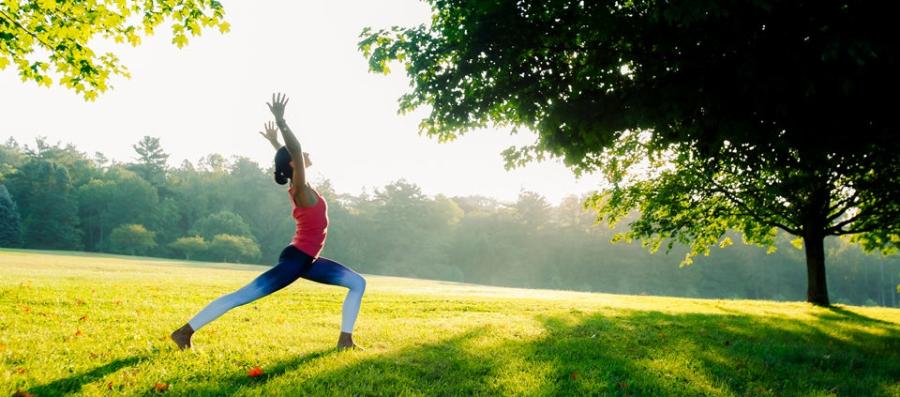
While many styles of yoga practice Warrior I, or Virabhadrasana I, with the back foot entirely on the floor, the Kripalu approach to this posture is a high lunge with the rear heel elevated. Approaching Warrior I in this way offers access to a thorough utilization of the hip extensors and flexors, toning of the Achilles tendon/plantar fascia complex, and lengthening of the deep core architecture.
Steadiness and Ease
Virabhadrasana is said to cultivate strength; when practicing this posture, it behooves us to ask what is meant by strength. Guidance is given us by the Yoga Sutras of Patanjali, Sutra 2.26: “sthira sukha asanam.” Sthira, from the root shta (to stand firmly), refers to the effort required for steadiness and stability. Sukha, meaning good (su) space (kha), is often translated as comfortable, but a more accurate interpretation is the balance that leads to ease, as sukha refers to the smooth rotation of a chariot’s massive stone wheel on a wooden hub. And so we can state this sutra as “Harmony in the pose is achieved by balancing effort and ease.” I often think of this sutra as more observation then instruction—all living things naturally express themselves in this way. Just as trees reach through their steadiness toward water and sun, and birds have the perfect blend of strength and lightness to fly and land, so humans naturally gravitate to strong and graceful movement through focused awareness.
This is a helpful observation—being strong isn’t simply a matter of being able to sustain more force with our body; rather, it’s the cultivation of the optimal tone that comes from balancing effort and ease. This is a conversation that permeates my practice: the moment-to-moment balancing of effort and ease. A barometer of this conversation is the breath—straining or forcing the breath is usually connected to strain in the body. Let the breath be smooth, quiet, and felt in the belly.
Placing the Feet
Our anatomical exploration starts with the feet. Beginning with the feet hip-width apart, step back with the right leg. In the interest of stability, the feet can be moved slightly wider in the frontal plane to steady any wobbles. An important consideration is how far to step back. First, adjust the elevated heel so that it is aligned with the back of the leg and hip. Then flex and extend the left knee several times. Depth of flexion will depend on the range of motion of the hip, knee, and ankle. When you come to your full range, the knee should be positioned directly over the heel to avoid any excess force on the patellar tendon, which weaves the bottom of the kneecap with the top of the shin.
Activate the feet. Spread wide through the balls of both feet. Anatomically, the roots of the first three toes—the place where the toes meet the foot at the metatarsal joints—are weight-bearing. The tibia directs the force of movement through the tarsal bones that send weight through the first three metatarsals and their respective toe joints. Moreover, this part of the foot skeleton, along with the medial ankle, is supported by the strongest muscles and ligaments in the foot. The fourth and fifth toes and metatarsals are critical for balance, but are not built for receiving weight. Architecturally, they are woven into the fibula side of the leg—the fabric that spans the lateral shin from knee to foot is designed for maintaining space and balance. Its skeletal framework has much smaller muscles and ligaments. Feel the relationship between the tibia and the inner part of the foot as weight bearing. Avoid taking all your weight into the big toe and first metatarsal; the first three metatarsals and their joints comprise the majority of the foot skeleton. Once you connect to this groundedness, spread wide through the outriggers of the fourth and fifth metatarsals.
Next, lift the arches of both feet by staying anchored in the roots of the first three toes and spreading laterally in the heel. Pause and consider the balance of effort and ease; over-efforting will pull the root of the big toe off the floor and/or put too much weight on the outer ankle.
Finally, rock back and forth from the heel to the ball of the front foot, and land in a place where you feel both equally.
Building Stability in the Legs
Activating the feet will lead to a strong engagement of muscle and myofascia (connective tissue) all the way up to the hip. This is a desirable aspect of stability. Again, notice the level of effort. Strong is good; strained is too much.
Moving up the legs, gaze at the front knee and direct it toward the center of the foot. Try stabilizing the knee by externally rotating the leg until the knee is properly aligned over the ankle. This is felt as a slight rolling up of the inner thigh and rolling down of the outer thigh. The more medially tilted the knee is, the deeper the needed rotation. Again, be mindful not to over-engage.
In the rear leg, the hip is extended and the heel is off the floor. Stabilize the extended leg by lifting the thigh without moving the hip. More subtle awareness can be explored by drawing your attention to the head of the femur. Feel and imagine drawing the head of the femur toward the hamstring, and use the lift to initiate the reaching back through the heel. Let the lift be in the hip joint, not behind the knee. Spread the toes and reach back through the heel to integrate the myofascia of the calf with the Achilles tendon and plantar fascia. Take care not to let the heel rotate medially: Pointing the heel straight back will emphasize hip extension as opposed to external rotation, and it offers an opportunity to tone the extensor fibers of the gluteals via eccentric contraction.
Grounding and Lifting
Warrior I is a leg strengthener; engaging in the ways described above on a regular basis will help create healthy tone. Having a stable base allows the hips to rest on the heads of the femurs. Create length in the pelvis by elongating the torso around the low spine and belly. To feel this more fully, exhale strongly to engage the transverse abdominus muscle—the innermost layer of the superficial abdomen. As the midsection narrows, bring your attention behind and below the navel and lift firmly, but not forcefully, as if you’re lifting an egg that’s floating a few inches above the pubic bone.
Maintain this sense of lift as you breathe, but remember not to squeeze too hard; blend effort with ease. Embody the feeling of having a grounded and buoyant lower extremity. To alleviate any anterior rotation in the hips, try lengthening the front body from the pubic bone to the ribs, and let the muscles around the tailbone relax, without tucking or scooping.
Feel the gravity and majesty of Warrior I from your feet to your ribs as you consider the chest and head. Allow your ribs, lungs, and heart to float on the diaphragm, which is supported by the lengthened midsection. As the arms reach overhead, take care not to allow the lower ribs to poke forward, which creates a swayed back at the thoraco-lumbar junction. If that starts to happen, firmly engage the upper abdominals, knitting the lower front ribs toward your belly. Extend through the elbows, spread the fingertips, and allow your shoulder girdle to soften away from your ears. Let your head rest on top of the spine, smile softly, and abide in the victorious bliss of Virabhadrasana I—grounded and light, steady and harmonious.
© Kripalu Center for Yoga & Health. All rights reserved. To request permission to reprint, please e-mail editor@kripalu.org.
























